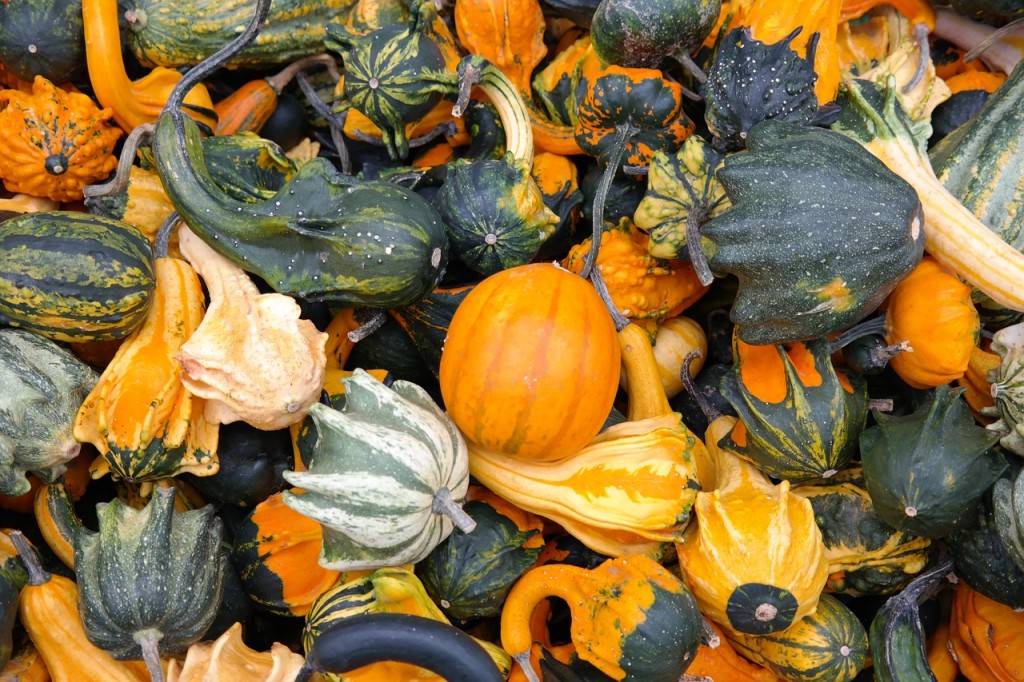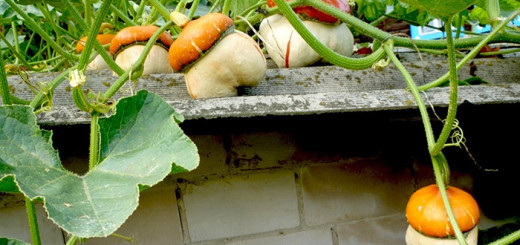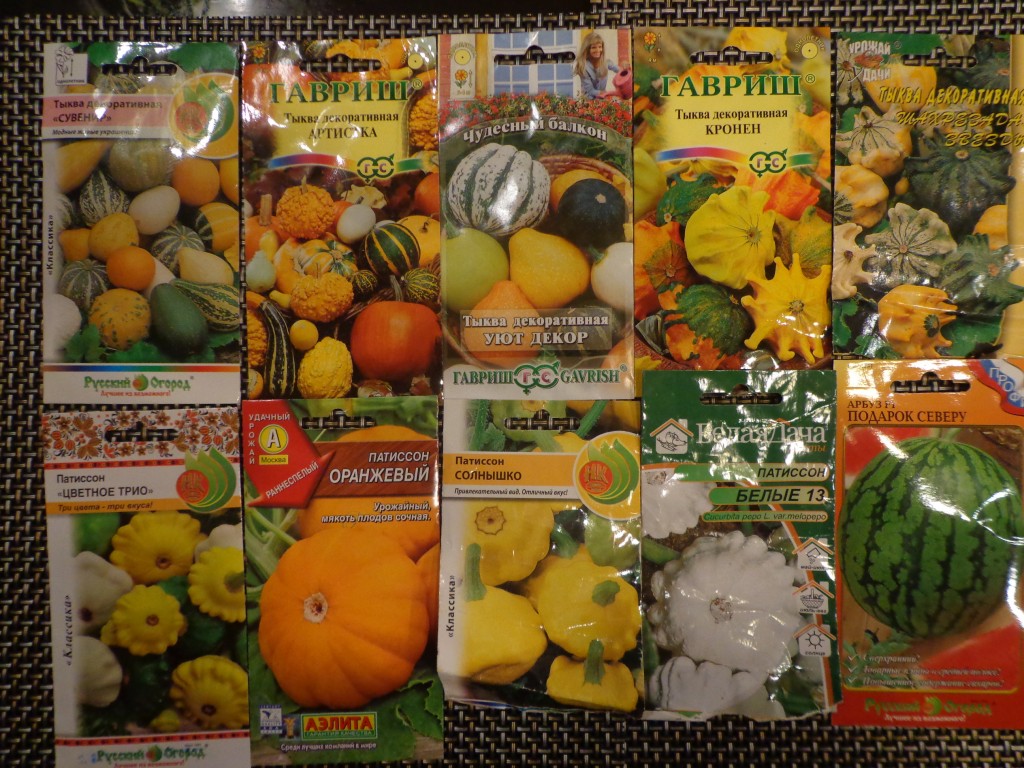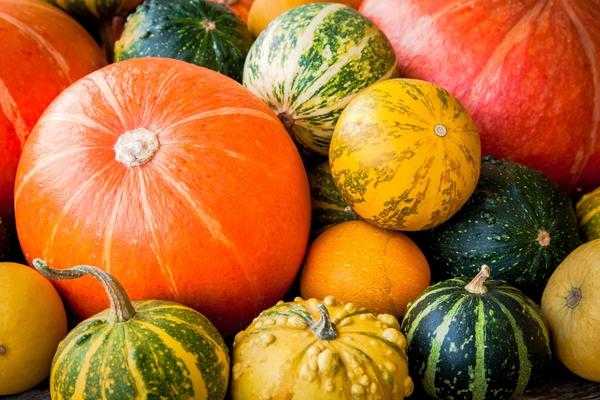All about growing decorative pumpkin from seeds
Content
Choosing a variety
In specialized stores and on the market, decorative pumpkin seeds are sold in the form of "assorted" different varieties, which makes it possible to get a lot of unusual fruits at once. The variety of shapes and colors is limitless. The most common and popular, among this relatively new culture in our area, are the following varieties:
- pear-shaped. The name speaks for itself - the shape of the fruit is very reminiscent of a pear. The color palette of this type is not uniform - there are both monochromatic and two-color ones. Moreover, the latter have a clearly defined border between different colors;
- tangerine. Distinctive features of this group are a very rich orange color, rounded shape, rather smooth peel, small size of pumpkins;
- star-shaped. The fruits of this variety are similar to starfish and small squash. They have a slightly flattened oblong shape with unimaginable colors - green, white, yellow, or a combination of several colors at once. The maximum fruit size is 15 cm;
- Warty. Pumpkins of this variety have a pear-like or round shape. They are covered with many bumps that resemble warts. And the variety of colors and their combinations can only be envied: yellow, white, fiery orange, green;
- turban pumpkins (popular name - fungus or Turkish turban). The fruit of this variety often has a smooth skin of bright orange or green marbled color. The color of the main part of the pumpkin and the "turban" is different in most cases;
- vicolis pumpkin is a typical decorative pumpkin. Its characteristic features are very beautiful lobed leaves and variegated green fruits with a white stripe or speck;
- lagenaria (bottle, dish pumpkin, gourd) refers to a decorative type for its unusual shape and green marble color. This variety is used for decoration, cutting out dishes, original vases, boxes, etc.
Planting from seeds
In order for decorative pumpkins to please others with their beauty, not so much effort is needed. First of all, they should be planted in sunny areas or light shade on fertile soil. It is advisable to germinate the seeds just before sowing. This is best done in a warm, dark place (closet, closet, etc.). These ornamental crops can be grown both from seedlings and by sowing seeds directly into open ground.
For seedlings, seeds are sown in late April or early May. The seeds that have hatched are planted in deep peat pots and placed in a greenhouse or on a windowsill. Plants can be transferred to open ground in early June, when the probability of frost decreases. Sowing seeds directly into open ground is carried out at the end of May. It is also advisable to germinate them first. Slightly hatched seeds should be planted in shallow holes at a distance of about 30 cm.
Video "Collecting pumpkin seeds"
Care and cultivation
Most exotic pumpkin varieties are not demanding and do not need special care.It is quite enough to properly prepare the seeds, and then water the plants in time and fluff the soil around the root. Also, fertilizing plants with organic fertilizers will not be superfluous. Usually, the first feeding is carried out two weeks after germination, and the next one during the formation of the ovary. To stimulate the growth of side shoots and form a more lush "hedge", you can pinch the one-meter shoots.
A strong support should also be provided for a decorative pumpkin, since most of its species are climbing plants, and during the period of active growth, the stems, leaves and fruits are quite heavy. Many gardeners grow this crop near gazebos, verandas, fences and other structures, thus providing natural support without the hassle of creating additional supports.
Protection from pests and diseases
If not cared for properly, this magnificent plant can be infested with diseases and pests. The most dangerous for pumpkin plants are slugs, aphids, powdery mildew, white and root rot, bacteriosis. At the first sign of illness, you need to take decisive action to keep the pumpkins healthy.
Powdery mildew - white or grayish powdery spots on the leaves and stem, which gradually grow over the entire surface of the affected plant and it dries up. The disease is actively developing with a lack of sunlight and sudden changes in temperature. To combat this disease, various chemicals are used, and the affected fruits and plants are necessarily destroyed.
White rot is extremely dangerous for both the plant and its fruits. The affected areas become wet, covered with a cotton-like neoplasm. High air humidity contributes to the development of this disease. If signs of white rot are found, all affected parts are carefully cut out and processed (sprinkled) with chalk or charcoal.
Root rot appears at the base of the stem and root. The disease is caused by soil fungi that attack the plant under poor plant growth conditions. You can prevent the development of this disease by disinfecting the seeds before planting. To save an already affected plant, and this is possible only at the initial stages of the disease, you need to add new soil, peat and humus.
Bacteriosis most often affects the leaves, but it is also dangerous for the stems and fruits. It appears as angular brown spots. Bacteriosis develops especially actively in a warm and humid environment. For the prevention and treatment of the disease, a 1% solution of Bordeaux liquid is used. The leaves and stems of the pumpkin are treated with it.
Slugs are dangerous for almost all vegetables. They appear en masse in rainy years. Adults attack plants at night. To protect the pumpkin and other plants on the site, you can treat them with a mixture of slaked lime and ash (1: 1).
Video "Growing and caring for a pumpkin"
To understand how to care for, grow and harvest pumpkins, we recommend watching the following video clip. The most useful and up-to-date information is collected here.




